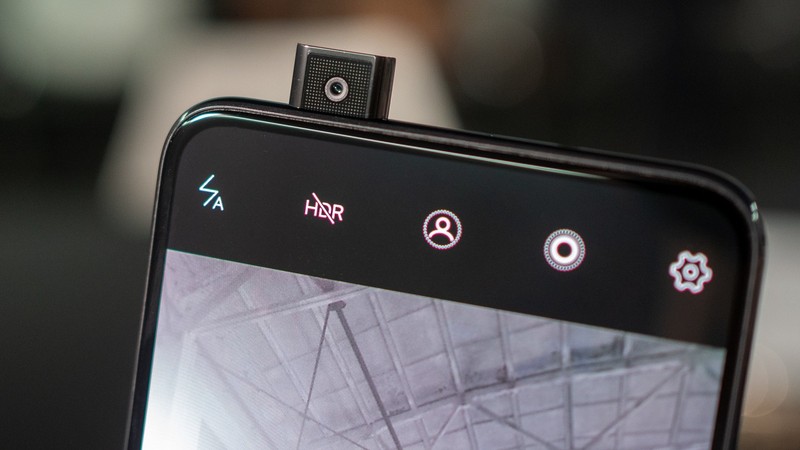The concept phone that kept our eyes rolling at the MWC 2018 has now become a production reality.
At a time when almost all smartphones in the market more or less resemble the iPhone X, Vivo has once again proven that Chinese can also innovate. Vivo's Nex is everything that a future phone can possibly be. First thing first, there’s no notch! Seriously, the notch is finally gone! So, where’s the front camera? Quite innovatively and interestingly, the company has introduced a motorised front-facing camera that pops up from the top of the phone, when you opt for a selfie.
Based on Apex, the fantastic concept phone we saw at Mobile World Congress in February this year, is really something new and refreshing.
Design
In terms of design, the most interesting and innovative feature, of course, is the absence of the notch – a trend that began with the iPhone X. For Vivo, it’s certainly an uncommon achievement, as the users will finally witness a true all-screen device. NEX has exceptionally sleek bezels, measuring just 2.16 mm on the top, 5.08 mm on the bottom and 1.71mm on each side, with a screen-to-body ratio of 91.24 per cent.
Overall, the Nex is not only a device that’s pleasant to look at but also one to grab people’s attention. Every time – and I’m using the word in all seriousness – I used the device at public places, it attracted people like a glossy surface attracts fingerprints. They immediately fell head-over-heel for the pop-up camera, although they all had the same question – ‘Will it break?’ Well, quite frankly, the answer is no.
Like X21, the Nex uses an in-display fingerprint sensor, and according to Vivo, this third-generation Synaptics fingerprint sensor is better and faster than the one on the X21.
Besides the absence of the notch, the main highlight of the Nex is its 8MP selfie camera that resides inside the phone and pops up from the top when you opt for the front camera. The mechanism is sturdy and is unlikely to break. I tested it in various scenarios to check for its durability, and it's not fragile or flimsy. The eject mechanism is strong enough to push away a finger, which I deliberately put on it, with some strength, to block it.

And since the selfie camera is housed inside the body, the Nex lacks the face unlock feature. To further strengthen the all-screen experience, the screen functions as a speaker when you're taking calls through the use of a linear vibrator, which basically transmits the sound to the frame of the phone that's relayed through the screen. This tech is called Screen SoundCasting by Vivo.
The phone is a bit on the heavier side and weighs approximately 200 grams. Also, it feels a little clunky – a compromise that, I think, most people would be willing to make for the motorised front camera.
Performance
The Vivo Nex runs Android 8.1 Oreo-based FunTouch OS 4.0 and packs a 6.59-inch full-HD+ Super AMOLED display with 19:9 aspect ratio. The Vivo Nex is powered by Qualcomm Snapdragon 845 SoC paired with 8GB RAM and 128GB of internal storage. In terms of performance, the Nex doesn’t fall short on any aspect, be it playing high end games, scrolling through social media apps or opening many tabs at the same time, and maintains an optimal temperature.
And while its hardware design is unique, the Nex’s software isn’t. It’s clearly inspired by the iPhone X – from the display of the icons to the quick settings menu, which appears with a swipe of a finger from the bottom. But what’s disappointing here is that some of the iOS inspired features in Funtouch OS are worse than what you get in stock Android and Samsung’s TouchWiz.
The phone lacks the search feature for settings, which is disappointing, especially when you quickly need to turn a setting on or off. Apart from the not so desirable haptics and the lack of wireless charging, the Nex’s screen also doesn’t feel as premium as it should’ve. It’s colour reproduction, contrast and viewing angles are all fine, but its resolution seems a little insufficient to be stretched over such an expansive canvas. It has a PenTile screen, and with a closer inspection you’d notice that the text is not as sharp as that of the Galaxy S9 Plus or Google Pixel 2. This, however, is not a deal breaker. And while 1080p screen seems to be the right choice for most phones, I’d rather Vivo had gone for a 1440p panel like Samsung and LG, if it really wants to push the Nex as the most futuristic phone on the market, that is.
The Nex's AI-powered dual-rear cameras are good enough to use both outdoors and indoors. It uses a 12MP and a 5MP setup that allows you take portrait mode shots, however, there's no optical zoom. Low-light performance is decent, but sometimes it captures images that are overly sharpened. Over all, its performance is very similar to that of the Vivo X21, but that's no surprise, for both phones share the same setup.

The daylight performance of the Nex is indeed impressive, for it with minimal pixilation, even at 100 per cent zoom. The colours are vibrant and pictures are detailed with great contrast ratio.

The HDR mode on quite punchy, but it tends to make shadow details evident. Unlike Vivo’s previous devices, the Nex has an improved low-light performance. The 5MP secondary camera of the Nex is more than capable of creating a nice bokeh effect. The 8MP pop-up front camera is also decent enough for selfies but produces overly brightened images.
Conclusion
If you are tired of carrying the same rectangular boxes that you see everywhere to connect with your loved ones and want to stand out from the crowd, Vivo Nex is certainly a worthy purchase.
